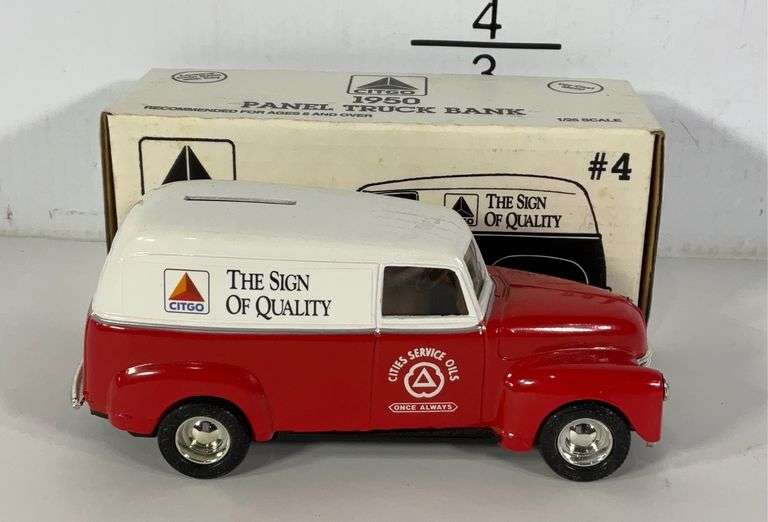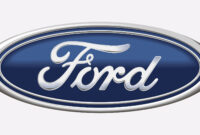1950 Panel Trucks: Workhorses of a Golden Era sale.truckstrend.com
In the annals of automotive history, few vehicles embody the spirit of post-war American industry and ingenuity quite like the 1950 Panel Truck. More than just a utility vehicle, these enclosed-body trucks were the unsung heroes of a booming economy, serving as the backbone for countless small businesses, tradesmen, and service providers. Robust, reliable, and remarkably versatile, the 1950 panel truck represented a pivotal moment in commercial vehicle design, bridging the gap between rugged pre-war utilitarianism and the more refined, comfortable designs of the mid-century. Today, they are cherished by collectors, restorers, and customizers alike, revered for their distinctive aesthetics and their tangible connection to a bygone era of growth and innovation.
The Post-War Boom and the Rise of the Panel Truck
1950 Panel Trucks: Workhorses of a Golden Era
The late 1940s and early 1950s marked an unprecedented period of economic expansion in the United States. Following the austerity of World War II, America surged into a consumer-driven boom, fueling a dramatic increase in demand for goods and services. Small businesses flourished, from bakeries and dry cleaners to plumbers and electricians, all requiring efficient and dependable ways to transport their wares and equipment.
This burgeoning commercial landscape created the perfect environment for the panel truck to thrive. Unlike open-bed pickups, panel trucks offered secure, enclosed storage, protecting goods from weather and theft. Their large, flat side panels also served as mobile billboards, providing invaluable advertising space for businesses. Manufacturers responded to this demand with a new generation of trucks that were more powerful, durable, and aesthetically pleasing than their pre-war predecessors, solidifying the 1950 panel truck’s place as an indispensable tool for the growing American economy.
Defining Features and Design
The 1950 panel truck is instantly recognizable by its distinctive body style. Key features include:
- Enclosed Cargo Area: The most defining characteristic, offering a fully enclosed, weather-protected space for cargo, accessible via large rear doors.
- No Rear Side Windows: Unlike station wagons or "Suburban" type vehicles, traditional panel trucks typically lacked side windows in the cargo area, prioritizing security and advertising space. Some rare exceptions or custom builds might have had them.
- Cab-Over-Engine (COE) or Conventional Cab: While conventional cab designs (engine in front of the driver) were more common, some manufacturers offered COE models, particularly for heavier-duty applications, to maximize cargo space within a given wheelbase.
- Robust Chassis: Built on sturdy truck frames, these vehicles were designed for heavy loads and continuous use, often sharing components with their pickup truck counterparts.
- Simple, Functional Interiors: Cabins were generally spartan, focusing on durability and utility rather than luxury. Bench seats, basic instrumentation, and tough materials were standard.

The styling of the 1950 models often reflected the emerging trends of the era, moving towards more rounded, streamlined forms while retaining a rugged, no-nonsense appeal.
Key Manufacturers and Models

Virtually every major American automotive manufacturer produced a panel truck in 1950, each with its own loyal following.
- Ford: The F-Series, introduced in 1948, quickly became a sales leader. The 1950 Ford F-1 Panel Truck (half-ton) and F-2/F-3 (three-quarter/one-ton) were highly popular, known for their robust Flathead V8 engine option and classic styling.
- Chevrolet: Chevy’s Advance-Design trucks, also introduced in 1947, were incredibly successful. The 1950 Chevrolet 3100 (half-ton) and 3600 (three-quarter-ton) panel trucks featured a distinctive "streamlined" look and were powered by the reliable "Stovebolt" inline-six engine.
- Dodge: Dodge’s "B-Series" trucks offered a unique "Pilot-House" cab design for improved visibility. The 1950 Dodge B-100 (half-ton) and B-200 (three-quarter-ton) panel trucks were known for their ruggedness and "Job-Rated" engineering.
- GMC: Sharing many components with Chevrolet, GMC offered slightly more upscale or heavy-duty versions. The 1950 GMC 100-series (half-ton) and 150-series (three-quarter-ton) panel trucks were also popular choices for commercial applications.
- Studebaker, International Harvester, Willys: These manufacturers also produced their own versions of panel trucks, catering to specific niches and offering unique designs.

Under the Hood: Engines and Performance
Performance in 1950 panel trucks was defined by reliability and torque, not speed. Common engine configurations included:
- Inline-Six Engines: Chevrolet’s "Stovebolt Six" was legendary for its durability and simplicity. Dodge and GMC also relied heavily on their own robust inline-six powerplants, offering ample low-end torque for hauling.
- Flathead V8 Engines: Ford famously offered its Flathead V8, providing more horsepower and a smoother power delivery than many contemporary six-cylinders. This option made Ford panel trucks particularly appealing for those needing extra grunt.
Transmissions were typically manual (3-speed or 4-speed), often with a floor shifter. While top speeds were modest, these engines were built to work hard, enduring countless miles of stop-and-go city driving and long hauls. Fuel economy was not a primary concern, but their mechanical simplicity meant relatively easy maintenance.
Versatility in Action: Who Used Them?
The true genius of the 1950 panel truck lay in its incredible versatility. They were adapted for a myriad of uses:
- Delivery Vehicles: The quintessential role, transporting everything from baked goods and dry cleaning to furniture and appliances.
- Trade Vehicles: Plumbers, electricians, carpenters, and painters relied on them to carry tools, materials, and supplies to job sites.
- Service Vehicles: Utility companies, repair services, and even small independent mechanics used them as mobile workshops.
- Emergency Services: Modified panel trucks served as ambulances, fire chief vehicles, and even hearses, especially in smaller communities.
- Mobile Businesses: From ice cream trucks to mobile repair shops, their enclosed space allowed for custom interiors tailored to specific business needs.
- Military & Government: Many were procured for various non-combat support roles.
Their large, flat side panels were a dream for advertisers, turning every delivery into a mobile marketing opportunity.
Restoration and Customization: A Modern Resurgence
Today, 1950 panel trucks enjoy immense popularity in the classic car and truck community. Their rugged good looks, ample interior space, and a certain nostalgic charm make them ideal candidates for various projects:
- Original Restorations: Purists seek to bring these vehicles back to their factory glory, meticulously restoring every detail to period correctness. This often involves sourcing original parts, which can be a challenge.
- Custom Shop Trucks: Many enthusiasts build them as "shop trucks," often lowered, with modern wheels and custom paint, blending vintage aesthetics with contemporary performance.
- Hot Rods/Street Rods: With their sturdy frames, panel trucks are popular platforms for hot rodding, often receiving powerful modern V8 engines (like small-block Chevys or Ford 302/351s), updated suspensions, and custom interiors.
- Promotional Vehicles: Businesses often acquire and customize them to serve as unique, eye-catching promotional vehicles, leveraging their classic appeal.
Tips for Restoration:
- Rust is the Enemy: Check thoroughly for rust in floorboards, rockers, lower body panels, and frame.
- Parts Availability: While mechanical parts for popular models (Ford F-Series, Chevy Advance-Design) are relatively available, unique body panels can be scarce and expensive.
- Modern Upgrades: Consider disc brakes, power steering, and a modern powertrain for improved drivability and safety if planning to drive it regularly.
Finding and Buying a 1950 Panel Truck
Acquiring a 1950 panel truck requires patience and careful consideration.
- Where to Look: Online marketplaces (eBay, Hemmings, ClassicCars.com), classic car auctions, specialized truck forums, and local classifieds are good starting points.
- Condition is Key: Be realistic about your budget and mechanical skills. A "barn find" project will be cheaper but require significantly more time and money than a running, driving example.
- Inspection: Always inspect the vehicle in person, or hire a trusted third-party inspector. Look for frame damage, extensive rust, missing components, and signs of poor previous repairs.
- Paperwork: Ensure the title is clear and matches the VIN.
Challenges and Considerations
While owning a 1950 panel truck is rewarding, be aware of potential challenges:
- Parts Availability: While common mechanical parts are often reproduced, specific body panels or trim pieces can be difficult to find or expensive.
- Safety: These vehicles lack modern safety features like seatbelts (often), airbags, crumple zones, or anti-lock brakes. Upgrades are highly recommended for regular driving.
- Mechanical Simplicity: While easy to work on, their older technology means less power, less efficient braking, and generally a slower, less comfortable ride than modern vehicles.
- Fuel Economy: Expect single-digit or very low double-digit MPG figures.
- Maintenance: While robust, they still require regular maintenance, often more frequently than modern cars.
Estimated Price Guide for 1950 Panel Trucks
Prices for 1950 panel trucks can vary dramatically based on condition, manufacturer, rarity, and level of customization. This table provides a general estimate for common models like Ford F-1, Chevy 3100, or Dodge B-100 Panel Trucks.
| Condition Category | Description | Estimated Price Range (USD) |
|---|---|---|
| Parts/Donor | Heavily rusted, non-running, incomplete, suitable only for parts. | $1,500 – $5,000 |
| Project/Rough | Running but needs extensive restoration (bodywork, paint, interior, mechanical). | $5,000 – $15,000 |
| Fair/Driver | Runs and drives, safe for limited use, but needs significant cosmetic/mechanical work. | $15,000 – $30,000 |
| Good/Restored | Older restoration or well-maintained original, presentable, reliable driver. | $30,000 – $55,000 |
| Excellent/Show | Fully restored to original or high-end custom build, show-quality finish. | $55,000 – $100,000+ |
Note: These are estimates. Rare models, specific custom builds, or unique historical significance can command higher prices. Always factor in potential restoration costs.
Frequently Asked Questions (FAQ)
Q1: What’s the main difference between a panel truck and a van or Suburban?
A1: A panel truck typically has no side windows in the cargo area, prioritizing security and advertising space. A van (especially later models) often has more internal height and may have side windows. A Suburban (or Carryall) is essentially a station wagon on a truck chassis, designed primarily for passenger transport with numerous windows.
Q2: Are 1950 panel trucks good for daily driving?
A2: Generally, no, not without significant upgrades. They lack modern safety features, power, braking, and comfort. While they can be driven daily, it requires a commitment to older technology and regular maintenance. Most owners use them for weekend cruises, shows, or as promotional vehicles.
Q3: Are parts hard to find for 1950 panel trucks?
A3: Mechanical parts for popular models (Ford F-Series, Chevy Advance-Design) are relatively available through specialized classic truck suppliers and reproduction companies. Body panels and unique trim pieces can be more challenging and expensive to source, often requiring fabrication or extensive searching.
Q4: What kind of fuel economy can I expect?
A4: Don’t expect much. Original engines typically yield single-digit or very low double-digit miles per gallon (e.g., 8-12 MPG), depending on the engine, transmission, and driving conditions. Modern engine swaps can significantly improve fuel economy.
Q5: What were the most common engines in 1950 panel trucks?
A5: For Chevrolet, the inline-six "Stovebolt" was standard. Ford offered its Flathead V8 and also an inline-six. Dodge used its flathead inline-six engines. These engines were known for their durability and torque.
Conclusion
The 1950 panel truck stands as a powerful symbol of a dynamic post-war America. These workhorses were integral to the nation’s economic resurgence, delivering everything from groceries to dreams across bustling cities and growing suburbs. More than just utilitarian vehicles, they possessed a rugged charm and unmistakable aesthetic that continues to captivate enthusiasts today. Whether meticulously restored to their original glory, transformed into powerful hot rods, or reimagined as unique promotional vehicles, the 1950 panel truck endures as a testament to American manufacturing prowess and a beloved icon of a golden era. Owning one is not just acquiring a vehicle; it’s preserving a piece of history and becoming part of a passionate community dedicated to celebrating these timeless machines.




